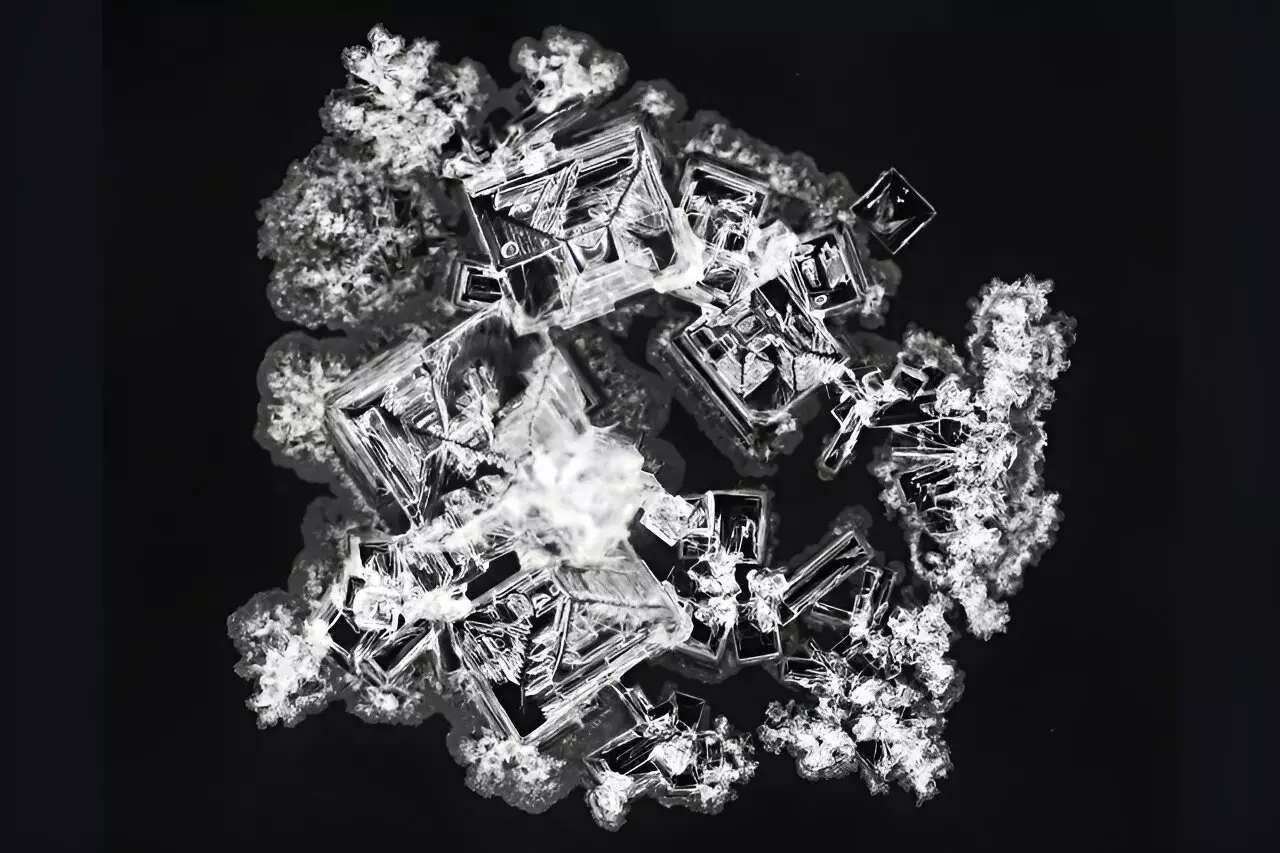Art often lies in the most unexpected places, even in something as mundane as a drop of salt solution. When viewed under the right conditions, the intricate patterns that emerge from a dried salt droplet resemble abstract art pieces, each unique in its structure and appeal. Fascinatingly, researchers at the Florida State University (FSU) have leveraged this beauty not merely for aesthetic appreciation but as a pathway to groundbreaking advancements in chemical analysis. Their recent study, published in the esteemed Proceedings of the National Academy of Sciences, uncovers how these delicate patterns can serve as “chemical fingerprints” to assist machine learning algorithms in identifying various types of salts.
Emerging from the FSU Department of Chemistry and Biochemistry, this innovative approach led by Cottrell Professor Oliver Steinbock proposes a shift in how we perceive and analyze chemical substances. Instead of gathering samples for standard laboratory testing, the researchers scrutinized the patterns formed by dried salt solutions, a process that primes itself for engaging methods of computational analysis.
Decrypting Chemical Composition
The drying process of a salt solution is influenced by multifaceted forces including fluid dynamics, crystal growth, and external environmental factors. While traditional chemistry often entails analyzing these elements in-depth, FSU researchers turned the lens inward and posed a captivating question: Can unique drying patterns of salt yield insight into the chemical types present?
A meticulous examination ensued, resulting in the capture of over 7,500 images representing 42 distinct salt types. Utilizing an innovative software methodology, they meticulously converted these images into 16 different quantifiable parameters. Features like deposit area, compactness, and texture were transformed into numerical data that encapsulates intricate patterns formed by tiny salt crystals, including shapes resembling rings, needles, and leaves.
To validate their groundbreaking findings, the researchers then challenged their machine learning program with new images outside the original dataset. The results were astonishing; the program accurately identified the salt types 90% of the time— a success beyond expectation, remarks Steinbock. The ability to differentiate between sodium chloride and potassium chloride, for instance, demonstrates the depth of analysis achievable with this novel approach.
A Leap Towards Automation
With the current dataset forming a solid foundation, researchers intend to expand their work by analyzing hundreds of thousands of additional images. This ambitious endeavor necessitates significant automation, leading to the development of an ingenious robotic drop imager under Steinbock’s guidance. Unlike human analysts who might feel overwhelmed by a collection of thousands of images, a computer’s capacity for incremental learning ensures accuracy and efficiency— rendering human error virtually obsolete.
The innovative machine learning algorithms shine light on not only the efficiency of chemical identification but also demonstrate technology’s burgeoning role in overcoming limitations faced by conventional laboratory techniques. The ramifications of this automated approach hold the promise of transformative applications.
Potential Applications Beyond the Lab
Imagine the incredible potential of this technology beyond a laboratory setting. The ability to swiftly analyze chemical compositions using minimal sample quantities opens avenues in numerous fields. Consider equipping rovers on extraterrestrial missions— where deploying extensive chemistry labs is impractical— with this lightweight camera technology as a feasible alternative for surface analysis. This development could expand our understanding of planetary materials, offering insights into locations previously left unexplored.
Furthermore, in environments where access to traditional medical facilities is limited, this rapid screening technology could be repurposed to analyze blood samples or test materials for potential hazards. Particularly relevant in the contemporary climate of healthcare demands, this method requires just a few milligrams of material and could change how preliminary analyses are conducted, putting essential information into the hands of professionals and consumers alike.
While there is little doubt that this approach can redefine aspects of chemical analysis, it also offers a fresh perspective on art and science, merging aesthetic appreciation with rigorous academic pursuit. The cooperation between researchers, such as Bruno Batista, lead author of this study, and the contributions of students and colleagues, signifies a collaborative effort that embodies the spirit of innovation in chemistry.
Through this exploration of dried salt patterns, Steinbock and his team have not only carved out a niche for themselves in scientific research but have also illustrated the beautiful intersection of art and science. Each salt stain is not merely a deposit but a gateway to a world of analytical possibilities, a testament to human ingenuity in understanding the world around us.

